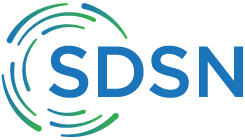Rationale and definition:
Lack of treatment of domestic and industrial wastewater presents a serious health and environmental hazard in many cities, particularly in developing countries where 80-90% of urban wastewater is untreated or insufficiently treated when discharged.1 Even in developed countries wastewater is not universally treated. Global rates of wastewater generation are increasing at an exponential rate as a result of rapid population growth and urbanization. A huge volume of untreated wastewater is dumped directly into water sources, threatening human health, ecosystems, biodiversity, food security, and the sustainability of water resources.2
For this reason we propose that an indicator on wastewater treatment be added to the post-2015 monitoring framework. There are many ways to define wastewater. Broadly defined, wastewater is a combination of one or more of: domestic effluent consisting of blackwater (excreta, urine and fecal sludge) and greywater (kitchen and bathing wastewater); water from commercial establishments and institutions, including hospitals; industrial effluent, storm water and other urban run-off; agricultural, horticultural and aquaculture effluent, either dissolved or as suspended matter.3
Wastewater treatment is the process of removing suspended and dissolved physical, chemical, and biological contaminants to produce (a) water that is safe to be discharged to the environment or suitable for reuse and (b) a solid sludge suitable for disposal or reuse (e.g. as fertilizer). Using advanced technology, it is now possible to re-use water after treatment for agricultural purposes, industry, or even as drinking water.4
Disaggregation:
By source, including domestic, commercial, and industrial effluents, and storm water runoff.
Comments and limitations:
The global community has only recently started working to build a common vision on wastewater management. Currently, it is estimated that 80% of effluent flows are not monitored, so data availability will be a challenge.
Primary data source:
Administrative data, including facility inventories.
Preliminary assessment of current data availability by Friends of the Chair:
B
Potential lead agency or agencies:
To be determined, options include WHO/UNICEF Joint Monitoring Programme (JMP), UNEP, and UN-Habitat.
UNESCO (2011). Global Challenge of Wastewater: Examples from Different Countries. Presentation at World Water Week in Stockholm, August 21-27, 2011.
Ibid.
Corcoran, E et al (eds) (2010). Sick Water? The central role of waste-water management in sustainable development. A Rapid Response Assessment, United Nations Environment Programme, UN-HABITAT. GRID-Arendal.
Ibid, and UNESCO (2011).

